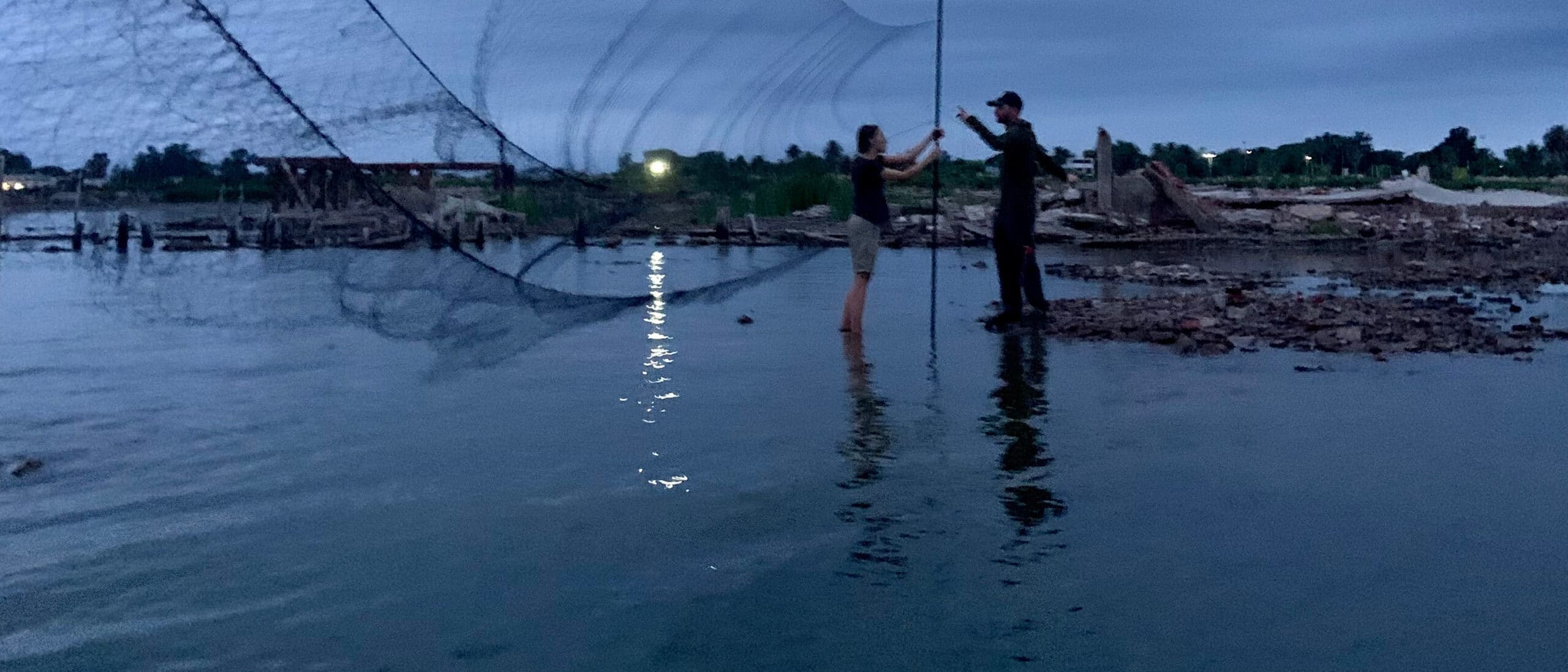
During February 26–29, 2024 scientists and naturalists met on the shores of Laguna Mar Chiquita in Argentina, one of the largest non-breeding sites for Wilson’s Phalaropes in the world, for the second-ever meeting of the International Phalarope Working Group (IPWG). Founded in 2019 by Ryan Carle of Oikonos Ecosystem Knowledge and Margaret Rubega of the University of Connecticut, the IPWG aims to address the research and conservation needs of phalaropes. Phalaropes, and particularly the Wilson’s Phalarope, have been in a state of decline for decades, and this year’s conference emphasized the need for research, public education, habitat management, and population monitoring at key sites along their 3,000-mile journey across the Americas.
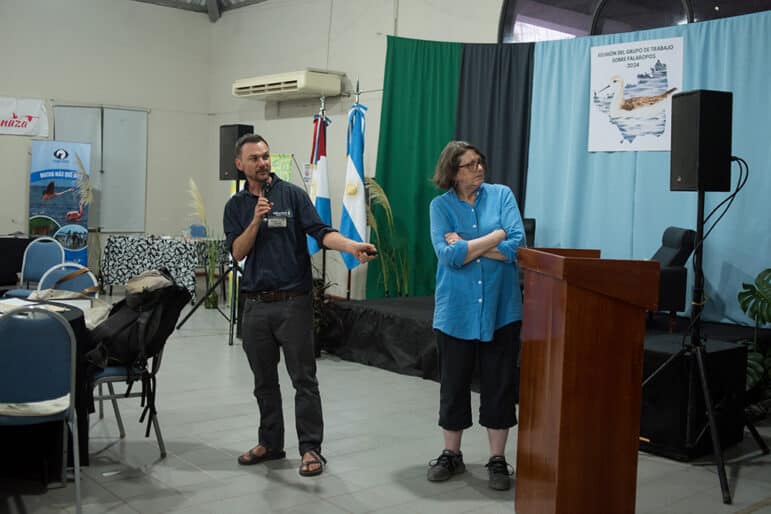
Presenters from Canada, the United States, Ecuador, Bolivia, Chile, and Argentina shared a wide range of presentations on topics from phalarope migration patterns to their feeding strategies to how researchers and land managers can conduct effective educational outreach. After the presentations, the international, multidisciplinary group began brainstorming plans to better understand and support phalaropes that can be executed over the next three to five years. In terms of research, the group identified two key agendas: getting more Motus towers installed across the Western Hemisphere, and synthesizing shorebird trapping methodologies and use of GPS technology. These initiatives aim to track phalaropes along their migratory journey and to identify critical stopover, breeding, and non-breeding sites for targeted conservation efforts.
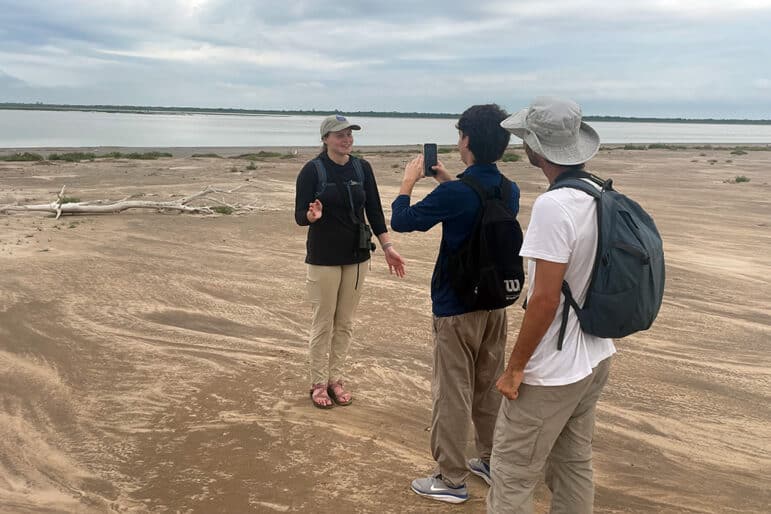
As the official proceedings of the conference came to a close, a group of participants with field research skills, me included, stayed for a phalarope trapping effort along the shores of Laguna Mar Chiquita. We scouted for phalarope flocks by foot, boat, truck, ATV, and even airplane to reach remote sites. Armed with nets, measuring tools, GPS tags, and a healthy supply of empanadas, we trekked to promising locations in hopes of tracker-tagging some of these notoriously difficult-to-capture birds. Despite our concerted efforts, our nets remained empty. Nonetheless, these attempts informed significant knowledge gaps in trapping methodologies for the future. Ryan Carle and others intend to resume these efforts at Chaplin Lake in Saskatchewan, Canada and Mono Lake this spring and summer.
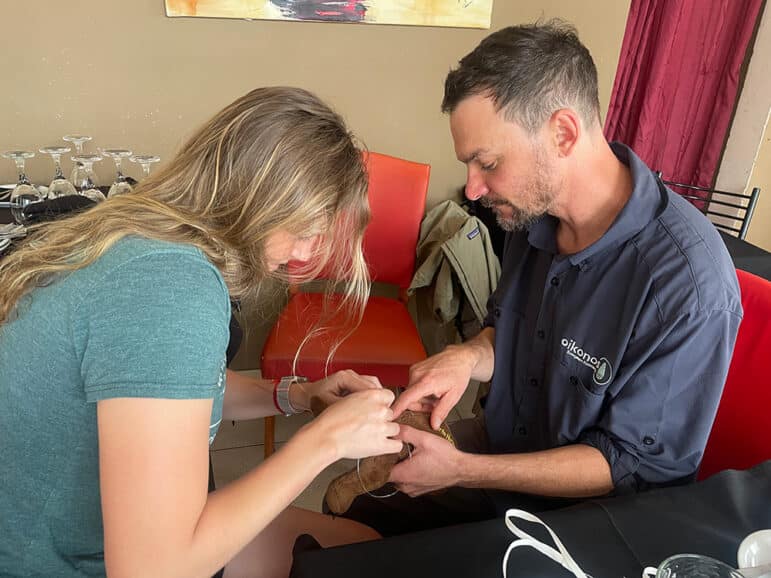
As the phalaropes traverse the Western Hemisphere, they have woven together a network of people and places. The phalaropes have taught us that places such as Mono Lake, Great Salt Lake, and Laguna Mar Chiquita do not exist in isolation. Rather, their health and destiny are connected and intertwined within the global network of saline lakes. This connectivity underscores the value of the humans who live in and love these places and naturally creates a collaborative ethic to create comprehensive and holistic management strategies for the conservation of phalaropes and the habitats, and people, on which they depend.
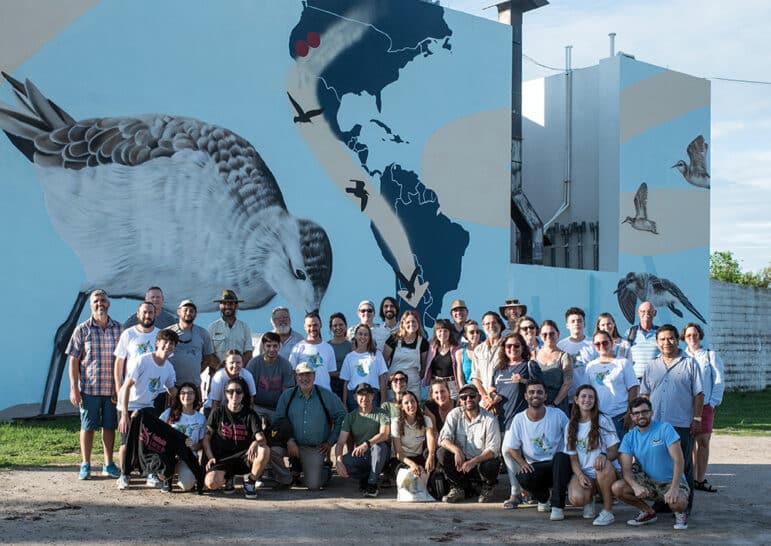
Top photo by Katie Smith.
